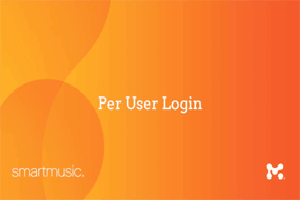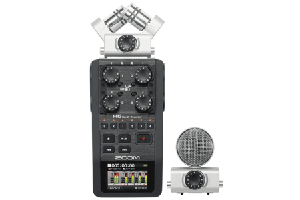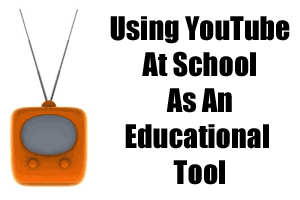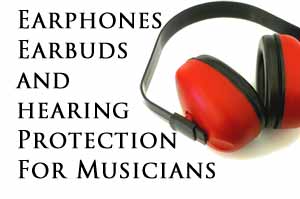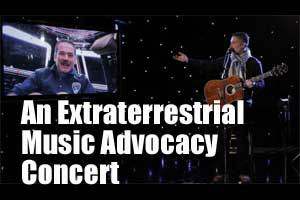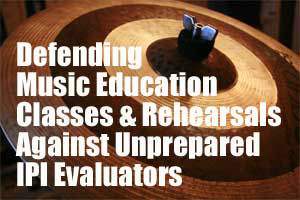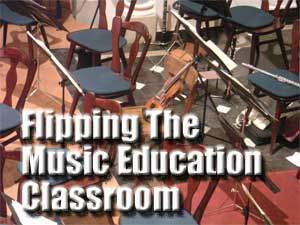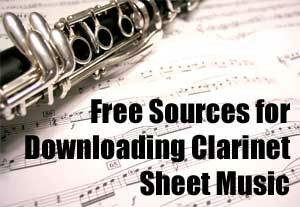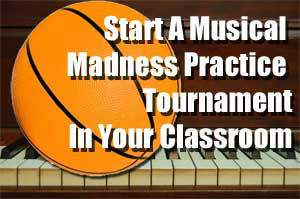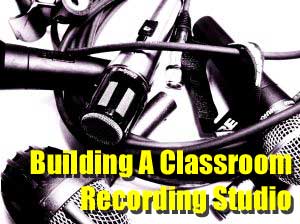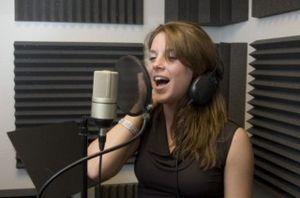- Details
- Written by Chad Criswell
With all of the new changes in SmartMusic including the new iPad app they released last winter I have been confused as to how exactly things are going to work for my students this fall with SmartMusic's change to a new per-user login system. I asked a bunch of questions to the SmartMusic guru's from a list of my own personal frequently asked questions about SmartMusic and how subscriptions will work between multiple computers or portable devices. Some of these answers may be explained in other places, but it took me so long to find the answers that I finally decided to write them all up in one place to hopefully help out any other teachers that are struggling with this. SmartMusic is a powerful program, but it does not always work the way you might expect it to.
- Details
- Written by Chad Criswell
I've long been a fan of Zoom's handheld digital audio recording products. My personal favorite, the H4n is currently one of the most popular products on the market. Now Zoom has released the new H6 model with an impressive array of upgrades and flexibility of uses that may just wind up overthrowing their own top dog product. Is the H6 worth the extra cash in return for the extra bells and whistles? Read on to find out my take on this cool new digital audio product.
- Details
- Written by Chad Criswell
The growth of YouTube is changing the way many teachers incorporate video presentations into their curriculum. No longer is it necessary to purchase or maintain a large collection of DVD's or music files as the vast majority of that same content can now be found online with just a simple web search. We spoke to Tom Rudolph, former director of music at Haverford Township School District in Havertown, PN and the author of the book YouTube in Music Education to get his insight into how YouTube and other online video sites can help us improve and expand on the educational opportunities we provide to our classrooms.
- Details
- Written by Chad Criswell
A musician's ears are the most important sensory organ they possess yet every day music students and their teachers irreparably damage that precious resource while participating in common everyday activities. We spoke with Mead Killion, Chief Technology Officer and founder of Entymotic Research and Joseph Pisano, Associate Chair of Fine Arts at Grove City College to dig into the realities of hearing loss by musicians and how we can use these tools effectively while still protecting our student's hearing as well as our own.
- Details
- Written by Chad Criswell
At some point in the past year you have probably heard about space station commander Chris Hadfield, the first Canadian to command the station and also apparently a very good guitar player and singer. His cover of the song Space Oddity by David Bowie has already had over twelve million views on YouTube. But did you know that back in February he did a music education event with the Barenaked Ladies music group of a song called Is Somebody Singing (I.S.S. for short)? His space to earth performance of that song was broadcast in a way such as to allow bands and choirs all over the world to play along with it as a part of what some billed as the world's largest concert. More importantly it was a very novel way to encourage and advocate for music education in the schools. The bad thing though is that if you are like me, you totally missed it!
Not to worry, you can still listen, watch, and perform the piece with your own ensemble, if you know where to look. Read on to find out more and download the music to I.S.S. for use with your own band.
- Details
- Written by Chad Criswell
I recently heard some horror stories of a music teacher receiving poor Instructional Practices Inventory scores from the other teachers during weekly observations of the teacher's ensemble rehearsal classes. For those not familiar with it IPI is a method many schools are currently using to evaluate instructional practices in teaching as they relate to students using the higher levels of Bloom’s Taxonomy. If you are already a music educator then you know that what we do is completely encompassed within the top levels of Bloom’s. Music education classrooms consistently use many of the best instructional practices, very rarely sliding down the pyramid of Bloom’s except in pedagogical cases where prerequisite knowledge of music notation and other musical topics is required. When we are performing there are very few other subjects that keep students thinking at the analysis and evaluation levels of Bloom’s as consistently as we do.
This then brings back the question of why on earth was this teacher’s peers grading him in a way that he perceived to be below the true level of engagement? It turns out they were saying that his rehearsals only ranked a 3 or 4 on the scale because they were “Teacher Led Instruction” rather than “Student Active Engaged Learning.” Conversely in another case he was given the highest marks possible when the observers noted that his students (who had not practiced) were essentially sight reading their lesson material. In blessed irony it was decided that that session was scored as being very high on the IPI scale because essentially “they were reading something new for the first time.”
Read more: Instructional Practices Inventory (IPI) Evals vs. Music Education
- Details
- Written by Chad Criswell
The concept of the flipped classroom is growing in popularity across the country as more and more schools adopt the common core. While we in music education are probably more "flipped" than most other classrooms we still resort to a traditional model where a teacher essentially lectures, demonstrates, then tells the student to go practice and come back in a week to prove they have learned it. That's not exactly the same thing...
In a flipped classroom the teacher acts primarily as a moderator, providing activities that help the student learn on his or her own. In essence, letting the student teach himself and thereby master the material more fully. How do we break with hundreds of years of tradition and "flip" our music education classroom to be more student centered? For many people it may require that we also flip our expectations of what we need to do in small group and private instrument lessons.
- Details
- Written by Chad Criswell
Finding decent, easy to play clarinet sheet music for free is not as hard as some might believe. The beautiful thing about the clarinet is that it can play sheet music written for almost any instrument as long as it falls within the playable range of the performer. In other words, a clarinet player doesn't have to play ONLY clarinet sheet music. If you are playing solo you can play almost any music that falls within your playable range. Focus on looking for sheet music for instruments that are also pitched in the key of B-flat like the trumpet, or tenor saxophone. Flute or piano music can in some cases can be played on the clarinet, making finding free sheet music a fairly easy proposition if you know where to look.
Read more: Free Sources For Downloading Clarinet Sheet Music
- Details
- Written by Chad Criswell
Need a fun, seasonally appropriate motivation tool to help keep your students practicing? Although it works best if you do this during March to coincide with March Madness there's no reason why you can't use it at any time of the year. Special thanks to Elaine Menke, 5th and 6th grade band director at North Polk Community School District for passing this idea along. She uses this tool each year with her students but it works just as well with pianists or almost any music studio setup.
Read more: A March Madness Tournament Style Practice Incentive Idea
- Details
- Written by Chad Criswell
Scott's Valley is an excellent example of what an educational recording studio curriculum can look like in a secondary school setting but teachers don't have to go that far in order to reap the benefits that even a small studio can provide. Teachers can turn a modest investment in equipment into a recording studio that will meet a wide variety of needs. Richard McCreedy, music technology teacher at River Hill High School in Clarksville, MD and Dennis Mauricio, music technology teacher at Hilltop High School in Chula Vista, CA are two such teachers with a wide range of ideas and experiences to share on the topic.
Read more: The Classroom Recording Studio- Building Your Studio
- Details
- Written by Chad Criswell
No one can deny the benefits that recording our soloists and ensembles can provide. From an educational standpoint recordings of rehearsals and performances can provide many different opportunities for critical evaluation and enhanced learning in the classroom. Those same recordings can often be used as public relations, marketing, and fundraising tools as well. However, there are others who think of a classroom recording studio as much more than a way to record and listen to student performances. Some see it as an educational class all to itself. The growth of digital music distribution has garnered a related growth in the recording fields, pushing recording and audio engineering classes to be created at community colleges and universities all over the country. A few secondary schools are also picking up on this and beginning to offer classes in these areas wherein the students walk away with a certificate in the recording arts as well as an extensive portfolio of their own work to show to potential colleges and employers.
